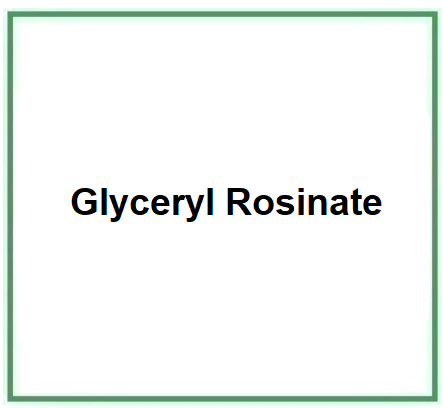Glyceryl Rosinate is a chemical compound, monoglyceric monoester obtained by the esterification of glycerine and carboxylic acids (an equivalent of a carboxylic acid and an equivalent of glycerine), in this ingredient the rosin acid.
The name describes the structure of the molecule:
- Glyceryl is a group derived from glycerol, a three-carbon molecule that forms the backbone of many lipids.
- Rosinate refers to a salt or ester of rosinic acid.
The synthesis process takes place in several stages:
- Extraction of the rosin. The first step in the synthesis of glyceryl rosinate is the extraction of rosin from pine trees to collect the resin, which is then distilled to obtain rosin.
- Reaction with glycerol. Rosin reacts with glycerol in the presence of an acid catalyst. This process, known as esterification, causes the formation of glyceryl rosinate. The reaction is typically carried out at elevated temperatures.
- Neutralization and washing. After the reaction, the mixture is neutralized, usually with an alkali such as sodium hydroxide. The product is then washed to remove unreacted reagents and by-products.
- Purification. The product is purified through processes such as filtration and distillation that help to remove any remaining impurities and ensure a high quality final product.
- Drying. The purified product is dried to remove residual moisture.
- Quality control. The final product is tested to ensure it meets the required specifications. This may involve testing for parameters such as acid value, saponification value and color.
What it is used for and where
Glyceryl Rosinate is a compound that combines elements of glycerol and rosin acid. It is often used in cosmetics and personal care products for its adhesive properties. It is also used in depilatory waxes due to its adhesion and ability to adhere to skin and hair.
Cosmetics
Film-forming agent. It produces a continuous ultra-thin film with an optimal balance of cohesion, adhesion and stickiness on the skin or hair to counteract or limit damage from external phenomena such as chemicals, UV rays and pollution.
Perfuming. Unlike fragrance, which can also contain slightly less pleasant or characteristic odours, the term perfume indicates only very pleasant fragrances. Used for perfumes and aromatic raw materials.
Safety. The purity level of commercial monoglyceric monoester is about 90 per cent, and impurities include fatty acids, monoglyceric diesters, mono-, di- and tri-glycerides.
CAS: 8050-31-5
![]() Glyceryl Rosinate
Glyceryl Rosinate 
